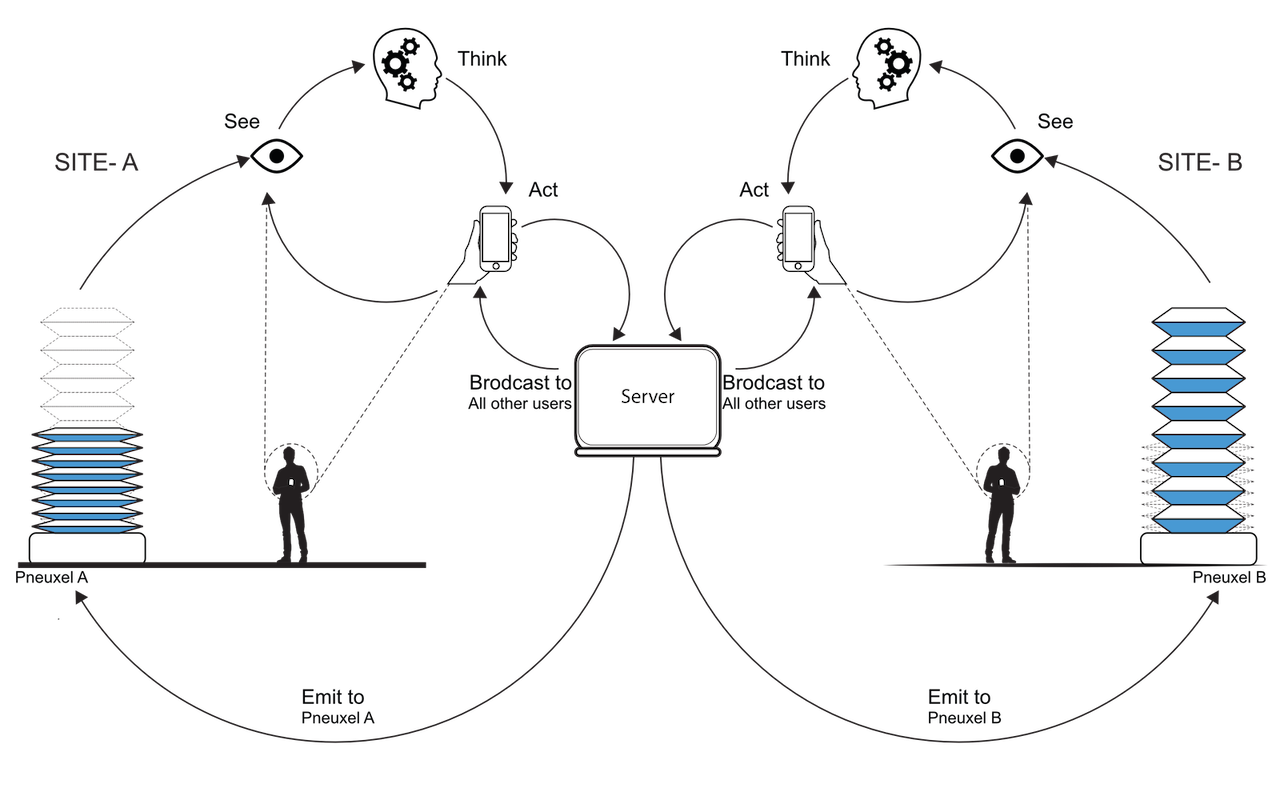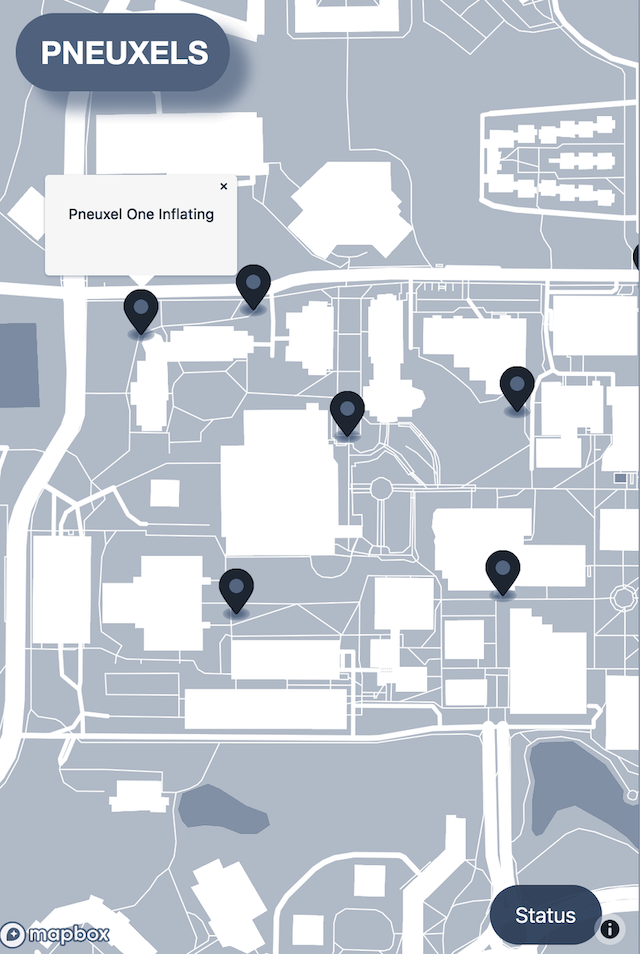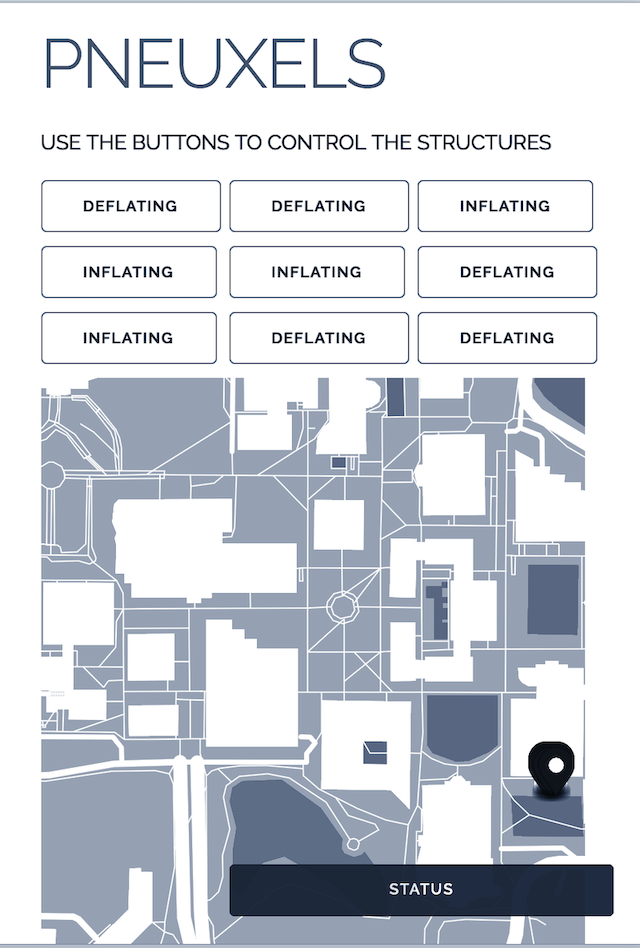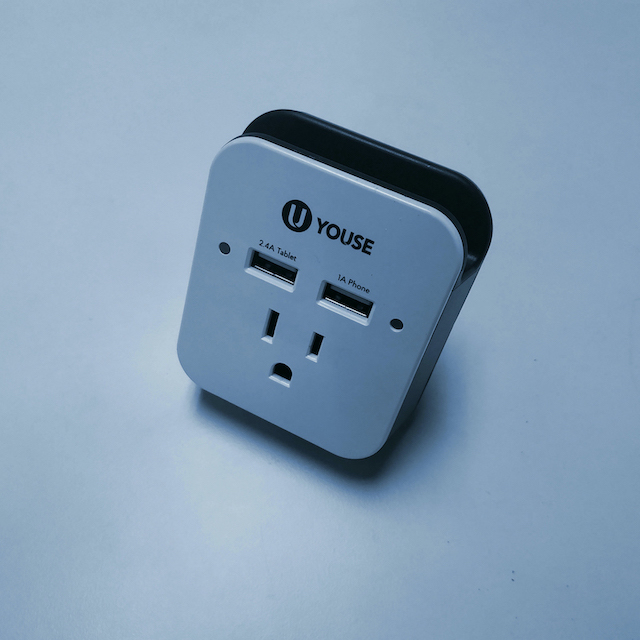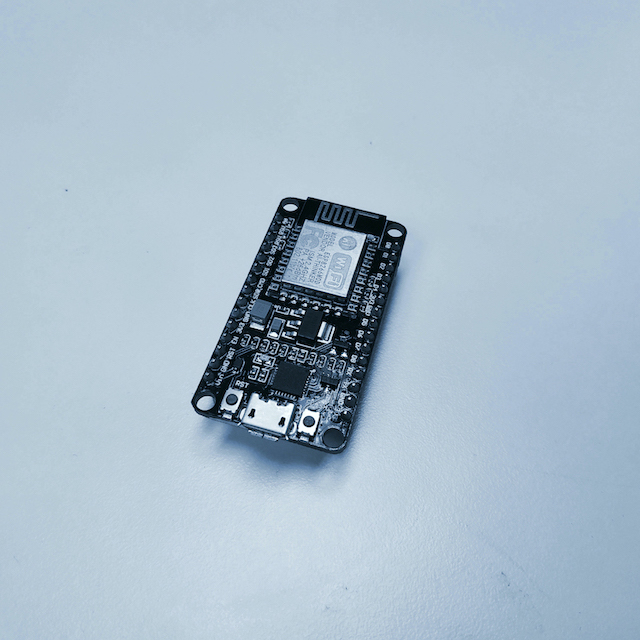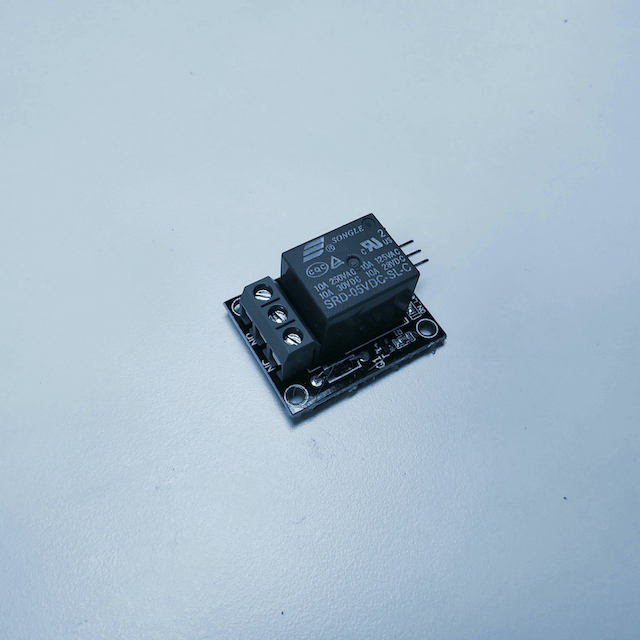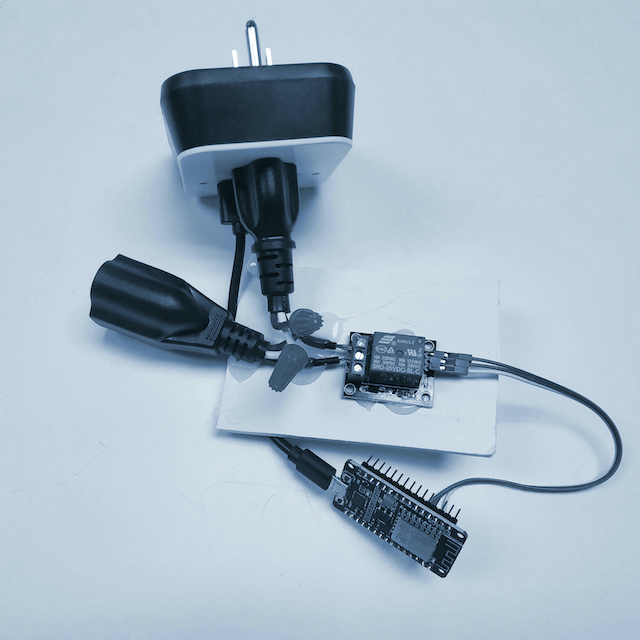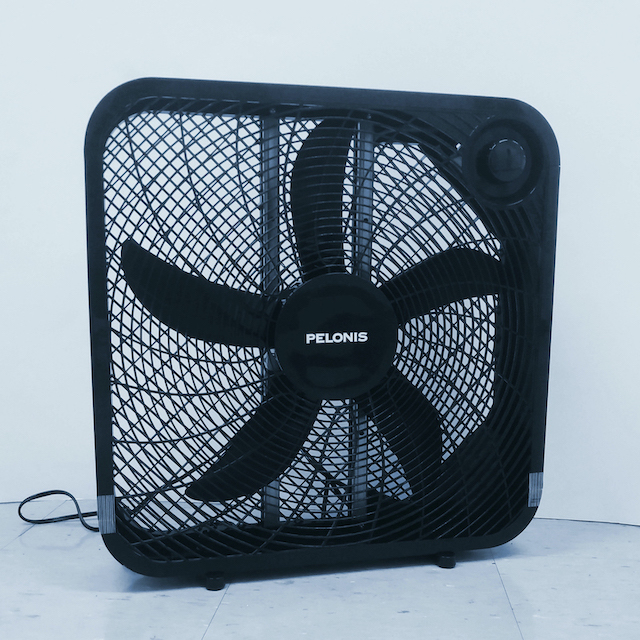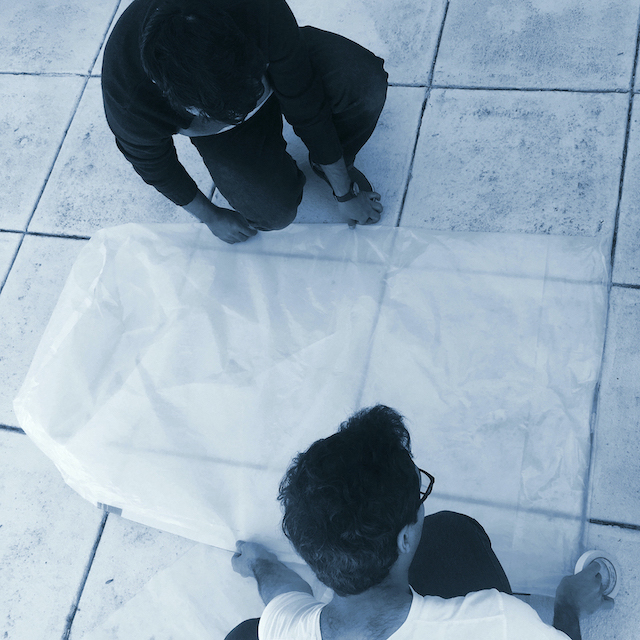Pneuxels
Pneuxels (Pneumatic Pixels) is a platform for creating wireless networks of programmable inflatables that can be placed at remote sites to allow visitors in each site perceive the presence of visitors in other sites, promoting public participation and place-making. Pneuxels are pneumatically actuated, WiFi enable, and change their physical state based on input from other Pneuxels, from the environment, or from users.
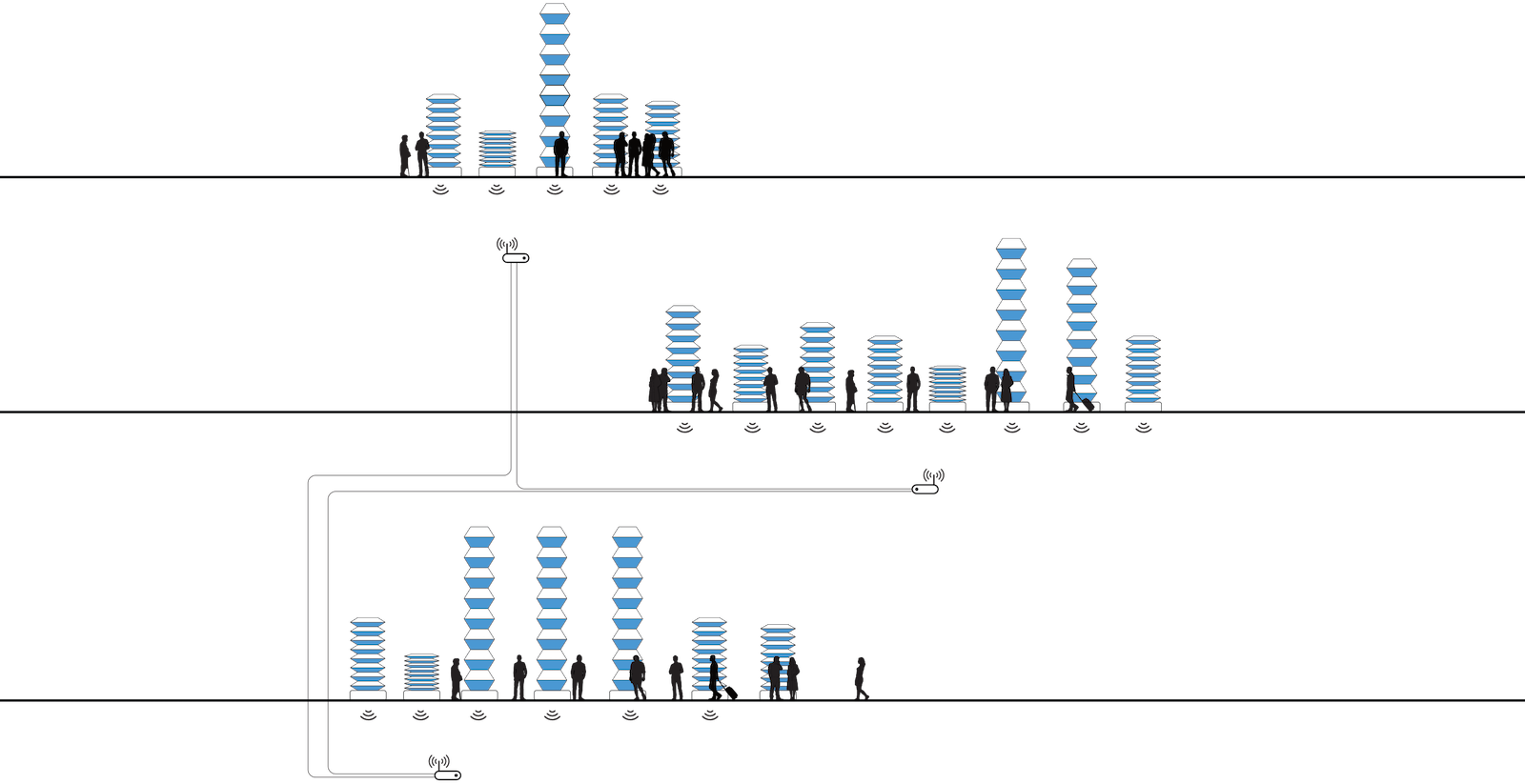
Much of research in design of interactive environments takes a symbiotic approach to human-machine interaction in which the “system” and the human(s) engage in a meaningful interaction as companions. We juxtapose this approach with one in which the “system” stands between two or more humans, mediating their interactions implicitly while remaining invisible to them as ambient environment.
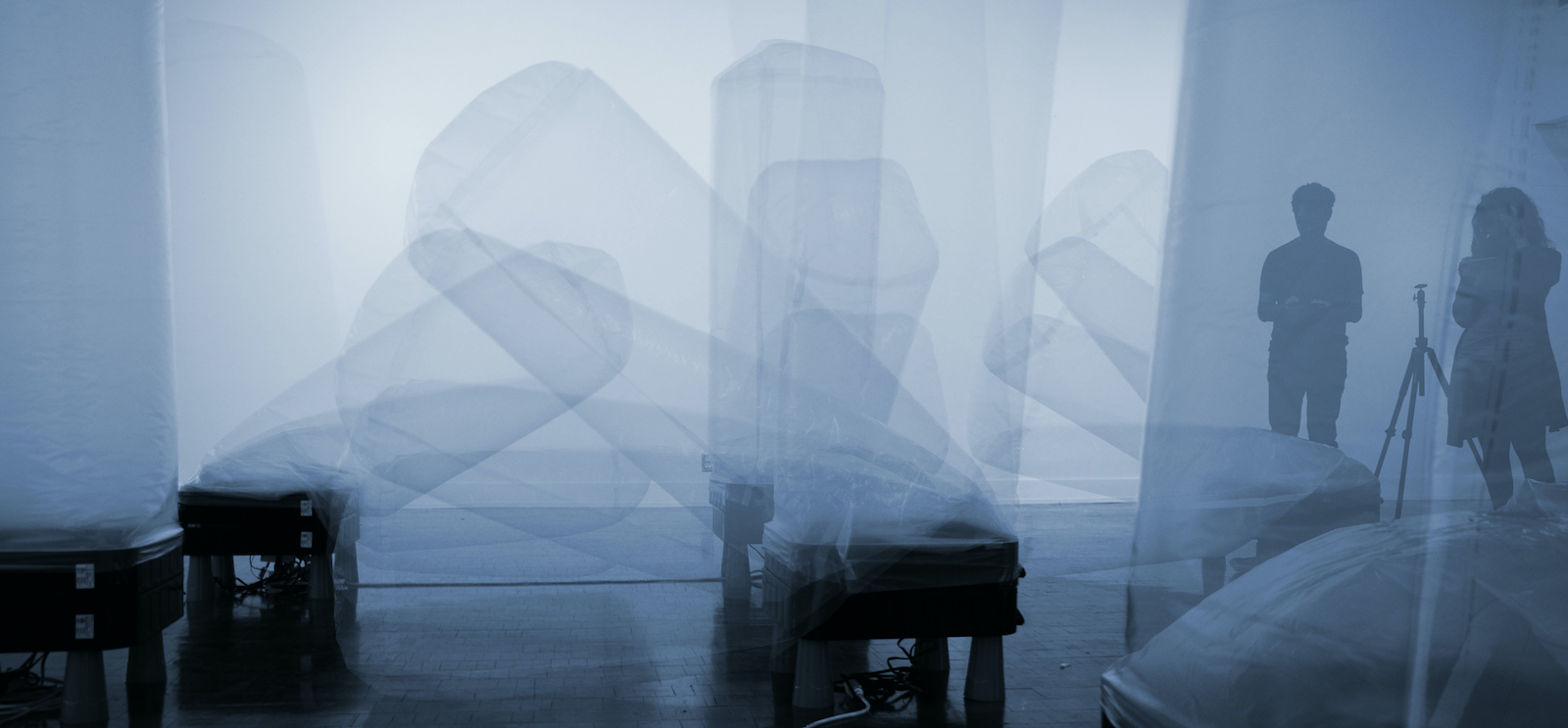
Previous research on object-based telepresence focuses on one-on-one interactions. We extend this discourse to a many-on-many perspective, asking the question: How might the built environment mediate collective interactions in large urban participatory systems? Pneuxels allows humans, objects and places to connect similarly to how a chat application allows online participants to converse.
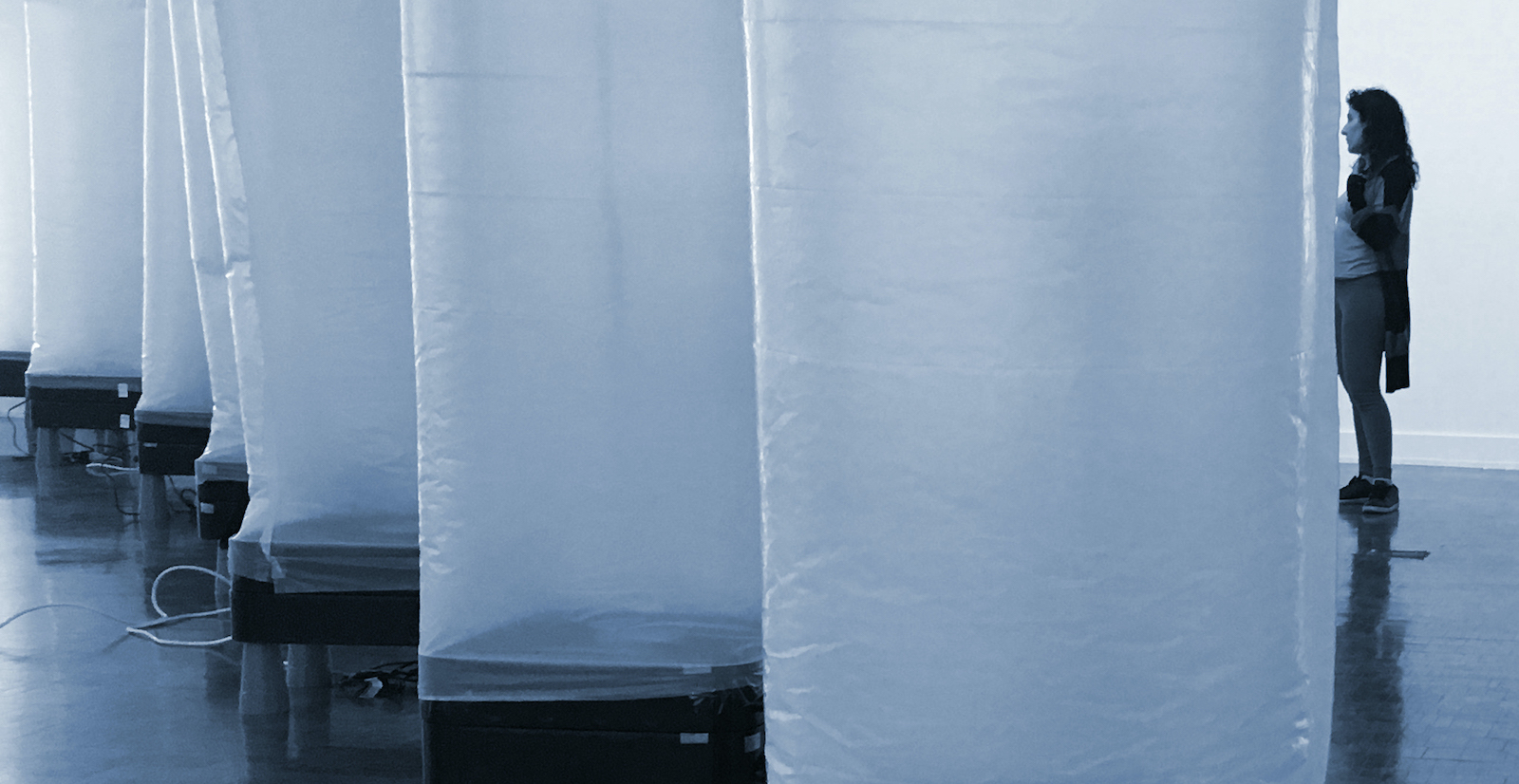
User Interface
The user interface consists of an interactive map that visualizes locations of Pneuxels and an array of binary-state buttons for inflating or deflating individual Pneuxels.
Hardware
Each Pneuxel has an esp8266 NodeMCU Wi-Fi enabled microcontroller. NodeMcu is an open-source firmware and development kit that is for prototyping IOT products. An Arduino 5v 1 Channel Relay Module is used with the esp8266 NodeMCU board in order to control the fan. We use 2.4-amp dual USB wall plate power adapters have both usb and AC power outlets together. PELONIS 20-in Box Fans were used.
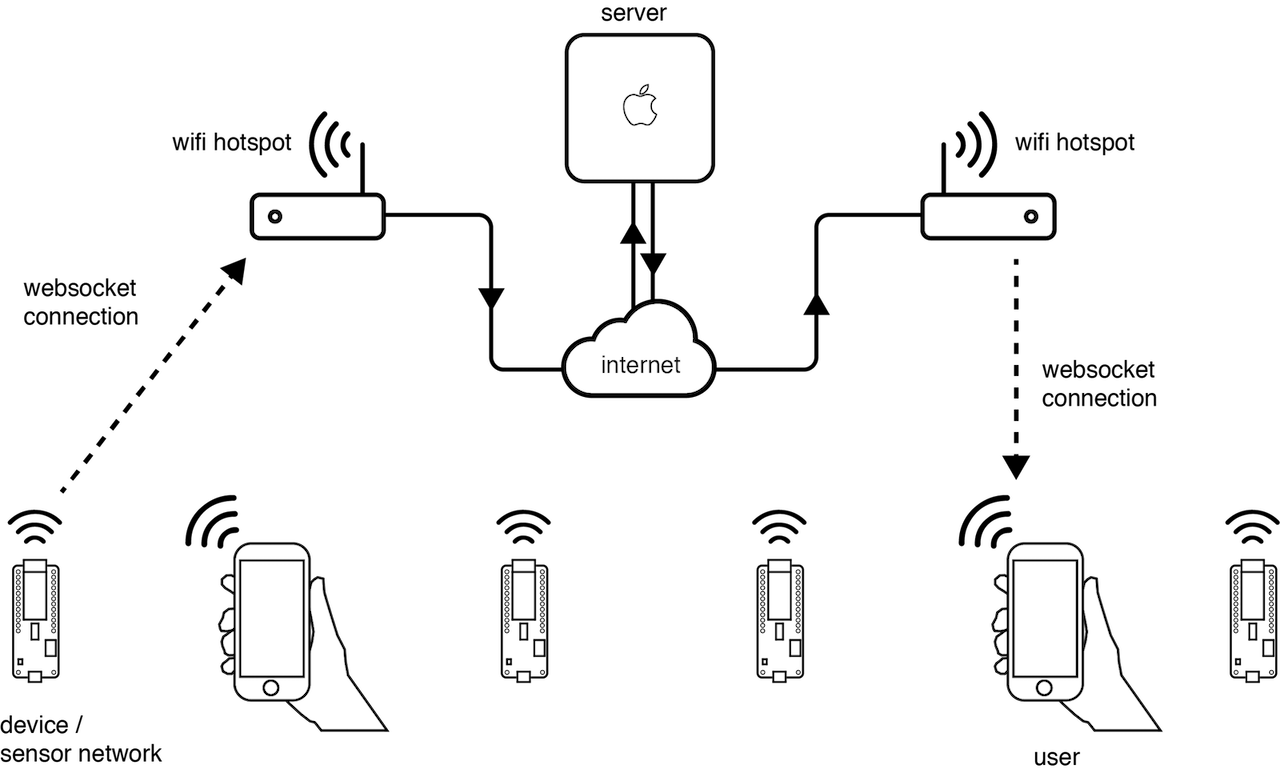
System Design
The system consists of three components: the server which handles communication between objects and users; the network nodes (Pneuxels) controlled by microcontrollers; the graphic user interface (GUI) that allows users to interact with the Pneuxels.
Server: We implement the server using Node.js, hosted it on a personal computer and connected to clients using WebSocket
Pneuxel client: Each Pneuxel is controlled by ESP8266 Wi-Fi relay and is connected with other components as shown in schematic diagram. The communication between the Pneuxels is established through two Arduino Libraries: ESP8266WiFi.h and SocketIOClient.h
Browser client: Is the GUI as shown in the figure above. This lets people to interact with each other via pneuxels in real-time.
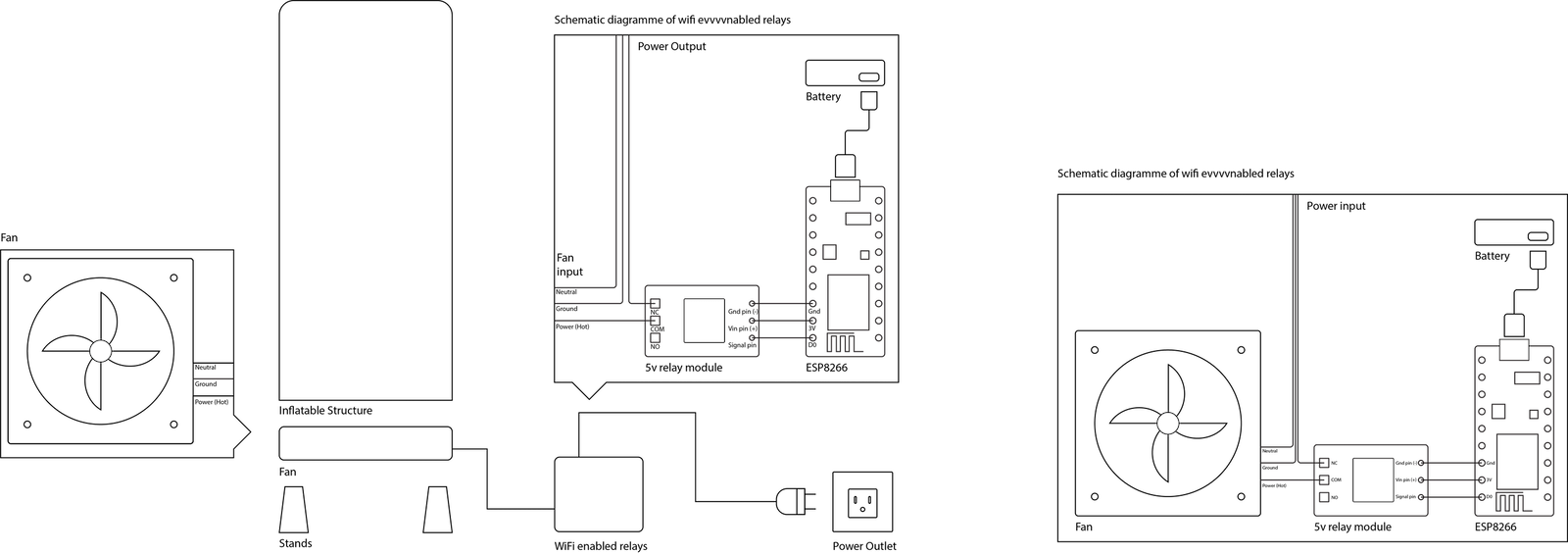
User Feedback
We conducted unstructured interviews with visitors on our installation site. Some visitors found the inflatables to resemble waving inflatable tube men while others found their shape to have a soft huggable appeal. We found interactions including people competing each other, pranking each other and working together to inflate and deflate Pneuxels. We found people asking loudly “who is turning them off?” form one side and people from other sides sometimes answering “I am.” We envision similar kind of interaction in which remotely located people are linked or affected by each other via Pneuxels.
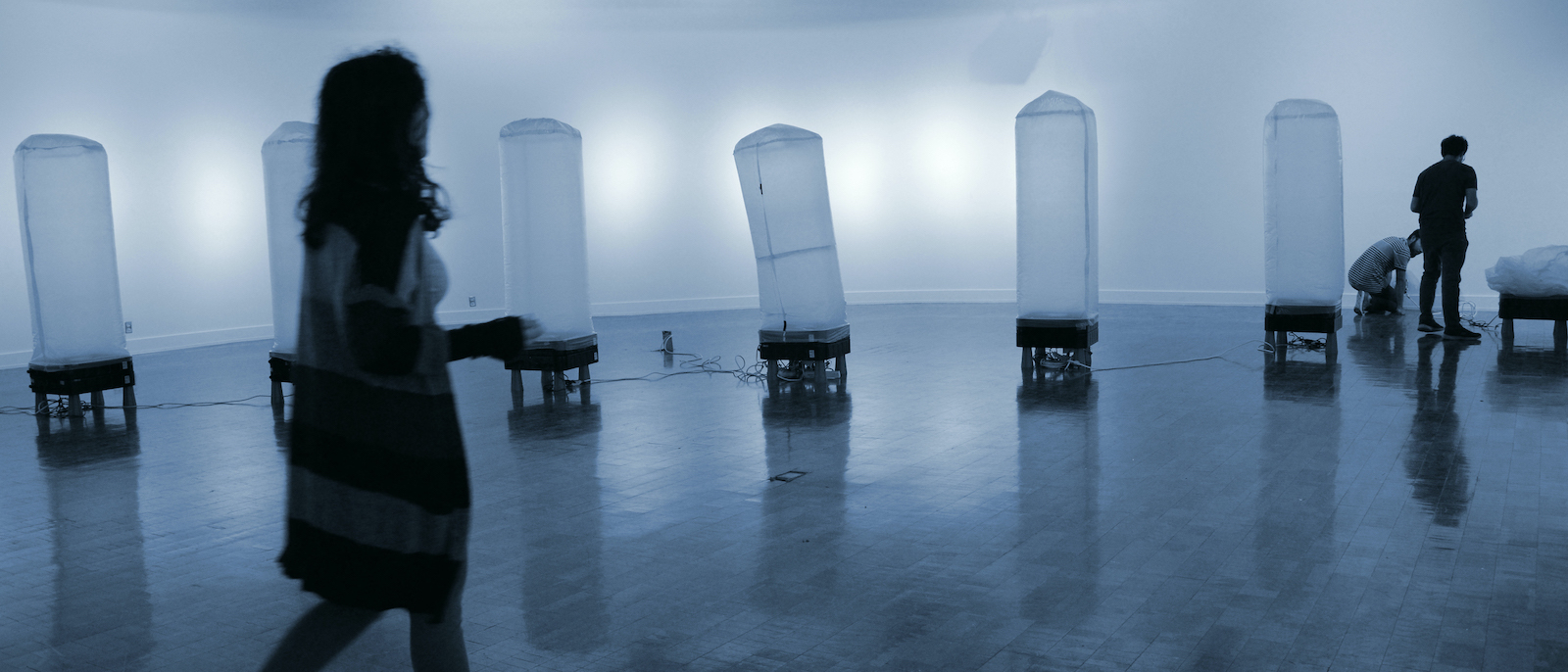
Publications
ACM UbiComp
Manoj Deshpande, Saquib Sarwar, Atefeh Mahdavi Goloujeh and Dimitris Papanikolaou. 2019. Poster: Pneuxels: A Platform for Physically Manifesting Object-based Crowd Interactions in Large Scales. In Adjunct Proceedings of the 2019 ACM International Joint Conference on Pervasive and Ubiquitous Computing and the 2019 International Symposium on Wearable Computers (UbiComp/ISWC '19 Adjunct), September 9--13, 2019, London, United Kingdom. ACM, New York, NY, USA.
Credits
Principal Investigator:
Dimitris Papanikolaou / Urban Synergetics Lab UNC Charlotte
Research Assistants:
Manoj Deshpande, Saquib Sarwar, Atefeh Mahdavi.
Support
Project supported by a UNCC SoA Faculty Research Grant
Acknowledgements
Part of the research and design were developed during the Spring 2019 course ARCH7211: Connective Environments 2 taught by Dimitris Papanikolaou at UNC Charlotte School of Architecture



